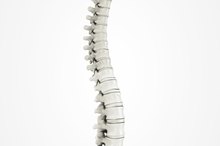What does fact checked mean?
At Healthfully, we strive to deliver objective content that is accurate and up-to-date. Our team periodically reviews articles in order to ensure content quality. The sources cited below consist of evidence from peer-reviewed journals, prominent medical organizations, academic associations, and government data.
The information contained on this site is for informational purposes only, and should not be used as a substitute for the advice of a professional health care provider. Please check with the appropriate physician regarding health questions and concerns. Although we strive to deliver accurate and up-to-date information, no guarantee to that effect is made.
Symptoms of an Inflamed Carotid Artery
Temporal arteritis, or an inflamed artery, refers to the inflammation and eventual damage of an artery—often the carotid—that supplies blood flow to the brain. An inflamed carotid artery is a scary and dangerous condition. Moreover, the symptoms are wide-ranging and often extremely painful. As many of the symptoms of inflamed arteries might be shared with other conditions, learning the symptoms of an inflamed carotid artery is necessary to the expediency and success of treatment.
If you are experiencing serious medical symptoms, seek emergency treatment immediately.
General symptoms
Many of the symptoms of an inflamed carotid artery may well be used to describe other illnesses. For instance, flu-like symptoms including fever, excessive sweating, nausea or a general feeling of illness might be symptoms of an inflamed carotid artery. Fatigue and weight loss are often manifestations of carotid artery damage as well. Muscle aches and pains, not unlike what you might experience with a cold or flu, may be present as well.
- Many of the symptoms of an inflamed carotid artery may well be used to describe other illnesses.
- For instance, flu-like symptoms including fever, excessive sweating, nausea or a general feeling of illness might be symptoms of an inflamed carotid artery.
Head symptoms
Symptoms of an Aneurysm in the Ankle
Learn More
Headaches on one side of the head, especially the temple or in the back of the head, are often linked to an inflamed carotid artery. You might notice particular sensitivity on one whole side of the scalp, or a thickness in the area of the artery. These symptoms are usually accompanied by a throbbing or pulsing in the scalp. In spite of this symptom, weak or no pulse in the area of the carotid artery is common with temporal arteritis.
- Headaches on one side of the head, especially the temple or in the back of the head, are often linked to an inflamed carotid artery.
- In spite of this symptom, weak or no pulse in the area of the carotid artery is common with temporal arteritis.
Vision symptoms
Vision problems are common symptoms of an inflamed carotid artery. Blurring, double vision and even a loss of vision can occur as a result of this condition. Vision problems may not be localized to the eye on the same side of the head as the affected artery; rather, either or both eyes may suffer a degree of instability or blindness as a result of an inflamed carotid artery.
Oral symptoms
Symptoms of a Blood Clot in Groin Area
Learn More
The muscles in the face may experience pain or lack of functionality as a side effect of this condition. In particular, the jaw area is often greatly affected, causing discomfort when chewing, swallowing or yawning. Pain may be intermittent or steady. Some individuals might experience swelling or discomfort inside the mouth and on the tongue. Such pain usually occurs in the joint of the jaw.
- The muscles in the face may experience pain or lack of functionality as a side effect of this condition.
- Some individuals might experience swelling or discomfort inside the mouth and on the tongue.
Other symptoms
Individuals may report a wide variety of additional symptoms, and the specific ones experienced vary greatly from one to the other. Bleeding gums and mouth sores are sometimes present. Joint stiffness or pain may be an indicator of an inflamed carotid artery. A dry cough, hearing loss and sharp nerve pain, while uncommon, have been reported by some individuals leading up to diagnosis of the condition. While any or all of these symptoms can be (and often are) present, sometimes a persistent feeling of general unease is the only indicator of carotid artery damage.
- Individuals may report a wide variety of additional symptoms, and the specific ones experienced vary greatly from one to the other.
- Joint stiffness or pain may be an indicator of an inflamed carotid artery.
Related Articles
References
- Medline Plus
- Lo A, Oehley M, Bartlett A, Adams D, Blyth P, Al-Ali S. Anatomical variations of the common carotid artery fifurcation. ANZ J Surg. 2006;76(11):970-972. doi:10.1111/j.1445-2197.2006.03913.x
- Nguyen J, Duong H. Anatomy, head and neck, anterior, common carotid arteries. In: StatPearls. Updated August 21, 2019.
- Radiological Society of North America. Carotid artery stenosis. Updated February 18.2018.
- Cleveland Clinic. Extracranial carotid artery aneurysm: Managment and treatment. Updated April 29. 2019.
Writer Bio
Alexis Writing has many years of freelance writing experience. She has written for a variety of online destinations, including Peternity.com. She holds a Bachelor of Arts in communication from the University of Rochester.







